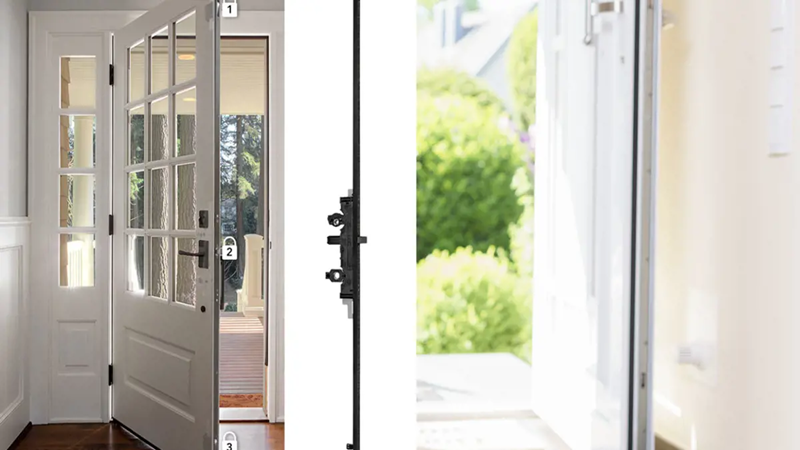The foundation of your home quite literally supports everything above it. It’s one of the most essential structural components of any building. When foundation damage begins to appear, many homeowners ignore the warning signs, thinking they’re simply cosmetic issues or minor inconveniences. But what starts as a hairline crack or a sticking door could eventually become a much more serious—and expensive—problem.
This article explores 5 common signs of foundation damage you shouldn’t ignore, with each sign highlighting underlying structural concerns. By catching these early warning signals, you can prevent future damage, maintain your home’s value, and avoid costly repairs.
1. Cracks in Walls or Floors

Cracks in walls or floors are often among the first and most noticeable indicators of foundation issues. While not every crack means there’s a structural issue, it’s crucial to understand which types of cracks could indicate foundation damage.
Types of cracks to look for:
-
Vertical cracks: These may be less serious but should still be monitored.
-
Horizontal cracks are more serious and typically signal that excessive pressure is being exerted on the foundation walls.
-
Stair-step cracks in brick or concrete block walls often indicate that the foundation is settling or shifting unevenly.
Cracks often form as a result of soil movement, water intrusion, or temperature changes. If you notice widening cracks, or if they reappear after being repaired, it’s a good idea to get a professional foundation inspection.
Pro Tip: Use a pencil to mark the end of a crack and write the date. Recheck it monthly to see if it’s spreading.
2. Uneven or Sloping Floors

Another sign of foundation damage that many homeowners miss is uneven or sloping floors. You may notice this when furniture starts to tilt, or when small items like marbles or balls roll on their own.
Why do floors slope?
-
Settling of the foundation on one side of the house
-
Shifting soil beneath the foundation
-
Excess moisture or poor drainage leading to soil expansion
Uneven floors can also lead to tripping hazards, especially for children and elderly family members. If left unaddressed, this problem can get worse over time and could compromise the entire structure.
Quick Test: Set a level or a round item, such as a ball, on the floor. If it rolls without being pushed, you may be dealing with sloping floors caused by foundation damage.
3. Windows and Doors That Won’t Close or Stick

While a single stuck window may just be a minor alignment issue, multiple sticky doors and windows across the house could mean something more serious is happening—especially if they used to function perfectly.
Signs to watch for:
-
Doors that rub against the frame or swing open on their own
-
Gaps at the top or bottom of the doors when closed
-
Windows that are hard to open or close, even after cleaning or lubrication
When the foundation shifts, it alters the frame alignment of your doors and windows. This causes them to jam or get misaligned. In severe cases, window frames may even crack or warp.
Quick Tip: If you’re frequently having to re-shave doors or forcefully push windows to close them, have your foundation inspected immediately.
4. Exterior Brick or Siding Gaps

The exterior of your home can also offer clear signs of foundation problems. Gaps or cracks in your brickwork, siding, or stucco are not just cosmetic issues; they’re red flags that your foundation may be shifting or settling unevenly.
What to look for:
-
Stair-step cracks in brickwork
-
Separation between bricks or siding panels
-
Crumbling mortar or bulging walls
These exterior gaps can allow water and pests to enter, which could lead to additional damage such as wood rot, mold, or infestation. Moisture can further weaken the foundation, leading to a vicious cycle of ongoing damage.
Important Note: Always inspect corners and points where walls meet. These areas often show signs of stress from foundation movement earlier than flat surfaces.
5. Basement or Crawl Space Moisture Issues

If you’ve noticed excess moisture in your basement or crawl space, this could be another indicator of foundation issues. Foundation cracks can allow water to seep in, leading to mold growth, foul odors, and even wood rot.
Signs of moisture problems:
-
Damp or wet basement walls
-
Puddles in crawl spaces
-
Mold or mildew smell
-
Rusted appliances or furniture
High humidity in these areas also makes them a breeding ground for pests such as termites and carpenter ants, which can further damage your home’s structure. Over time, water damage can accelerate foundation wear, especially if the drainage around your home is poor.
Quick Fix Tip: Install a sump pump or dehumidifier to manage moisture temporarily, but always investigate the root cause—often a shifting or cracked foundation.
How to Prevent Foundation Damage

Now that we’ve identified the warning signs, let’s quickly cover what you can do to prevent foundation problems in the first place.
-
Proper Drainage: Ensure gutters and downspouts direct water at least 5-10 feet away from the foundation.
-
Maintain Consistent Soil Moisture: Avoid letting the soil around your home become overly dry or too saturated.
-
Inspect Regularly: Perform visual inspections every season. Look at walls, floors, windows, and the exterior foundation.
-
Address Plumbing Issues: Leaky pipes under the home can cause soil erosion, which leads to foundation problems.
-
Hire Professionals: Don’t attempt DIY fixes for foundation issues. Structural engineers and foundation repair experts have the proper tools and knowledge.
When to Call a Professional

Many homeowners try to delay calling for help due to the fear of high repair costs. However, catching these problems early can save thousands of dollars in the long run. If you observe two or more signs mentioned in this article, schedule a foundation inspection immediately.
Professionals will assess the damage using laser levels, foundation piers, soil tests, and more. They can then recommend the right solution—whether it’s slab jacking, pier and beam reinforcement, or full foundation replacement.
Conclusion
Ignoring foundation problems can lead to severe and irreversible damage to your home. From cracks in your walls and floors to moisture issues in the basement, these signs all point to one thing: a shifting or deteriorating foundation that needs attention.
By staying alert to the 5 common signs of foundation damage—cracks, uneven floors, sticking doors/windows, gaps in exterior walls, and moisture—you can take proactive steps to safeguard your home. Don’t wait until minor issues become structural nightmares. Invest in timely inspections and repairs to protect your most valuable asset: your home.

